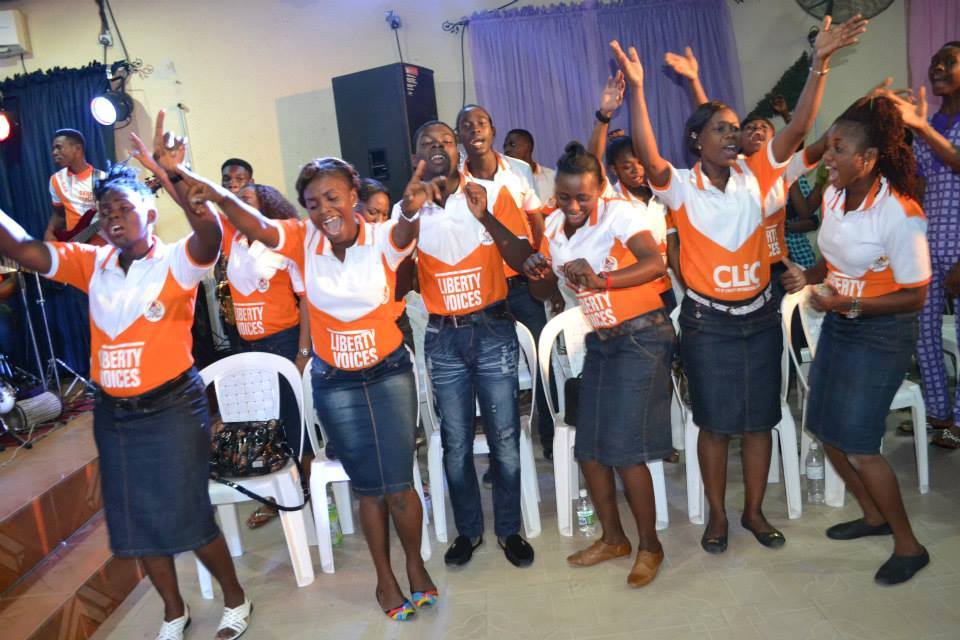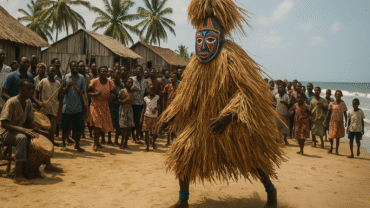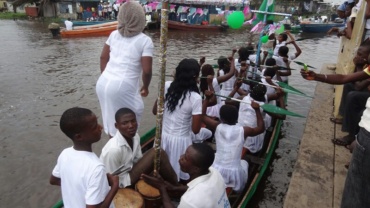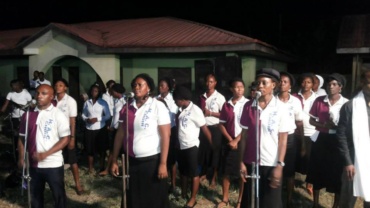In Ayetoro, cultural expression was inseparable from community life. While worship and work defined much of the settlement’s rhythm, celebrations provided opportunities to affirm identity, transmit values, and strengthen bonds across generations. Among the most memorable features of these occasions were the performances of children, whose dancing at cultural celebrations in the 1950s and 1960s symbolised both continuity of tradition and the vitality of the Happy City.
Archival photographs depict rows of children gathered in open courtyards or on sandy grounds, dressed in simple garments adorned with colourful sashes or patterned cloth. Their movements were often guided by drummers and singers, while elders and neighbours stood in a circle, clapping in rhythm and offering encouragement. The dances were not merely entertainment but participatory acts through which cultural memory was rehearsed and renewed.
Oral testimonies describe how children were prepared for these performances by parents and older siblings, who taught them steps rooted in Ilaje tradition. Songs accompanied the dances, blending biblical themes with local rhythms, reflecting the community’s synthesis of Apostolic spirituality and indigenous culture. The children’s performances thus operated at two levels: as joyful displays of youthful energy and as symbolic enactments of Ayetoro’s dual heritage.
The cultural celebrations at which such dances occurred were organised to mark key communal events — harvest festivals, leadership ceremonies, anniversaries of the town’s founding, or major religious gatherings. On these occasions, the participation of children carried particular significance. Their dancing demonstrated the community’s commitment to passing on its values to the next generation. As one elder later observed: “When the children danced, we saw our future. Their steps told us that the covenant of Ayetoro would not be forgotten.”
The performances also reinforced social cohesion. Parents and neighbours took pride in watching children perform, seeing in their movements both innocence and promise. The act of communal applause and singing created an atmosphere of shared ownership: the children were not only dancers for their families but representatives of the entire town. In this sense, the celebration was as much about affirming communal identity as it was about individual expression.
Visitors to Ayetoro frequently remarked on the charm and significance of these scenes. To outsiders, the sight of children dancing barefoot in sandy courtyards, framed by white-garbed Apostles and accompanied by drums, encapsulated the settlement’s unique blend of faith and tradition. What might have appeared as a simple performance carried, in reality, a deeper cultural meaning: a demonstration that joy, discipline, and spirituality could coexist in the life of a single community.
Though erosion has transformed much of Ayetoro’s physical environment, the memory of children’s dancing remains preserved in photographs and oral accounts. These images remind us that cultural celebrations were more than moments of festivity; they were affirmations of resilience, identity, and the transmission of values across generations. The dancing children of Ayetoro stand as enduring symbols of a community that found joy even amid challenge, and that placed its future firmly in the hands — and steps — of its youngest members.




